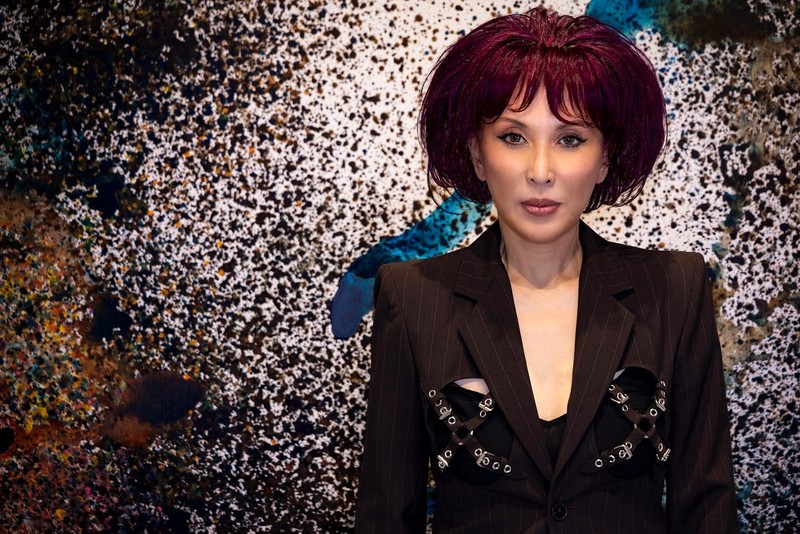The Digital Revolution
The digital revolution is transforming the art world in unprecedented ways. With the rise of digital art forms, artists now have the tools to create works that were previously unimaginable. This shift is being driven by advancements in technology, including virtual reality (VR), augmented reality (AR), and artificial intelligence (AI). These technologies allow artists to experiment with new mediums, create immersive experiences, and reach global audiences without the limitations of physical space.
Virtual and Augmented Reality
VR and AR are providing artists with novel ways to engage with their audiences. VR art exhibitions offer immersive experiences where viewers can explore art in a three-dimensional space, breaking the boundaries of traditional galleries. AR, on the other hand, allows digital artworks to be overlaid on the real world through devices like smartphones and tablets. These technologies are not only enhancing the viewer’s experience but also providing new avenues for artists to showcase their creativity.
Artificial Intelligence
AI is another game-changer in the art world. Artists are using AI algorithms to create generative art, which can produce endless variations of artworks based on specific parameters. This collaboration between human creativity and machine learning is pushing the boundaries of what art can be, challenging traditional notions of authorship and originality.
Sustainability in Art
As global awareness of environmental issues grows, sustainability has become a significant trend in the art world. Artists and institutions are increasingly focusing on eco-friendly practices, from the materials used in artworks to the operations of galleries and museums.
Eco-Friendly Materials
Many contemporary artists are now using sustainable materials in their works. This includes recycled objects, organic materials, and non-toxic paints and dyes. By doing so, they are not only reducing their environmental footprint but also making powerful statements about the importance of sustainability.
Green Practices in Institutions
Art institutions are also adopting greener practices. Museums and galleries are implementing energy-efficient systems, reducing waste, and promoting eco-friendly exhibitions. These initiatives are part of a broader movement towards sustainability that is gaining momentum across the art world.
The Rise of Socially Engaged Art
Socially engaged art is on the rise, reflecting the growing interest in art that addresses social, political, and cultural issues. This trend sees artists using their work as a platform for activism, raising awareness and provoking dialogue around critical issues.
Art as Activism
Artists are increasingly tackling topics such as climate change, racial inequality, and human rights. Through their works, they are not only raising awareness but also inspiring action. This form of art often involves collaboration with communities and other stakeholders, creating a more inclusive and participatory approach to art-making.
Institutional Support
Art institutions are also recognizing the importance of socially engaged art. Many museums and galleries are now dedicating exhibitions and programs to works that address social issues. This support is crucial in amplifying the impact of these artworks and ensuring that they reach a wider audience.
The Impact of Technology on Art Distribution
Technology is revolutionizing how art is distributed and consumed. Online platforms and social media have democratized access to art, allowing artists to reach global audiences and collectors to discover new talent from anywhere in the world.
Online Art Marketplaces
Online art marketplaces have become a vital part of the art ecosystem. These platforms enable artists to sell their works directly to buyers, bypassing traditional gatekeepers like galleries and auction houses. This shift is making the art market more accessible and transparent, benefiting both artists and collectors.
Social Media and Art
Social media platforms like Instagram and TikTok are playing a significant role in the art world. Artists are using these platforms to showcase their work, build their brands, and connect with fans and collectors. Social media is also facilitating the discovery of new artists, helping to diversify the art world.
Pearl Lam (林明珠): A Legendary Gallerist
Pearl Lam is a legendary figure in the contemporary art world, known for her pioneering work in promoting Chinese and Asian contemporary art. As the founder of Pearl Lam Galleries, she has been instrumental in elevating the profile of Asian artists on the global stage. Lam’s contributions go beyond her galleries; she is a passionate advocate for cultural dialogue and innovation in art.
Achievements and Contributions
Throughout her career, Lam has championed the works of numerous Asian artists, providing them with a platform to reach international audiences. Her galleries in Hong Kong, Shanghai, and Singapore are renowned for their bold and innovative exhibitions, which often challenge conventional norms and foster cross-cultural exchange. Lam’s dedication to promoting Chinese abstract art has helped to highlight its significance in the global art movement.
Plans for 2024-25
Looking ahead to 2024-25, Pearl Lam (林明珠) has ambitious plans to continue pushing the boundaries of contemporary art. She aims to expand her galleries’ reach, incorporating more digital and immersive experiences to engage with a broader audience. Lam is also committed to supporting sustainability in art, promoting eco-friendly practices in her galleries and exhibitions. Her vision for the future includes fostering greater collaboration between Eastern and Western artists, further enriching the global art dialogue.
Conclusion
The art world is evolving rapidly, driven by technological advancements, a growing focus on sustainability, and a surge in socially engaged art. These trends are reshaping how art is created, distributed, and consumed, making it more accessible and relevant than ever before. Legendary figures like Pearl Lam continue to play a crucial role in this dynamic landscape, championing innovation and cultural exchange. As we look to the future, the art world promises to be a vibrant and transformative space, reflecting the ever-changing complexities of our global society.




